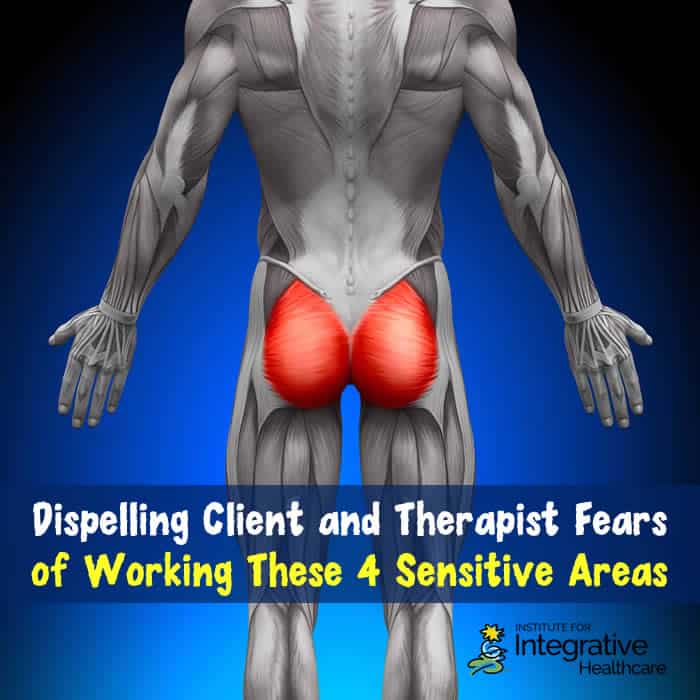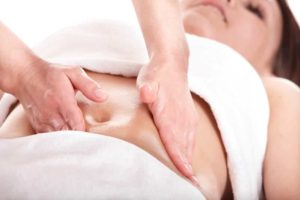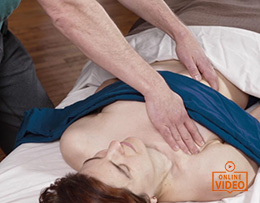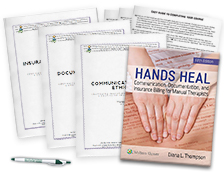

As a continuing education teacher, I have a unique perspective into entry level training. Students from a wide variety of entry level programs attend my classes annually. I enjoy learning how massage is presented nationwide from observing how massage therapists perform their work as well as by listening to how they speak about their massage efforts.
One intriguing development I have witnessed is the growing trend of schools to avoid presenting massage techniques upon sensitive areas such as:
- the abdomen
- pectoral region
- gluteal region
- and medial thigh.
Massage graduates from several entry level programs have told me how their entry level instructors discouraged performing massage technique upon any of these sensitive areas. When these graduates encounter the opportunity to learn techniques upon these areas in my continuing education classes, I find they generally shy away from this opportunity. They commonly express fear of liability, reiterating their entry level teacher’s words against working these areas.
How eye-opening to witness this shift in massage application! The intention of this article is to help dispel fears of working sensitive areas of the body.
Certainly, the important mantra of informed consent must always be honored with clients. Clients have the right to dictate, change, end, and provide consent for any bodywork provided. My intention is to provide a healthy means of expressing work in the abdomen, pectoral, gluteal and medial thigh regions.
Energy Follows Intention
Clients can sense confidence in a therapist’s approach and skill set. If I, as the massage therapist, approach a client with unsure hands, the average client will not feel safe and secure upon the table.
“Energy follows intention” is more than mere “hippie jive;” this phrase highlights that a confident approach with the body will translate into more opportunities to provide more options of bodywork within a session.
The term “guarding” is relevant at this point. Client guarding represents either a conscious or subconscious attempt to protect an area by a client. Recognizing this phenomenon is key to ensuring a client feels safe and secure upon the table.
You should work slower than usual with a heightened sense of awareness of perception of touch wherever guarding is present. Be ready for the potential of somato-emotional responses occurring when working at the guarded region.
Communication Is Key
How I speak bodywork matters just as much as how I perform bodywork. I ensure healthy, open communication with clients when working sensitive body regions. I will awaken a client if they happen to fall asleep to ensure they are aware of my presence in a certain area.
As I work upon a sensitive region, I will inform my client of three key ideas:
- where my hands are positioned
- where my hands are going
- the reason why I am performing a particular stroke or technique
Communicating these three ideas will ensure my client and I understand equally what is occurring during the session. Clients will respect a therapist who actively involves them when working sensitive areas.
The comfort level of the therapist must also be examined. Remember that if you, as a therapist, are approaching a body region with professional touch, technique and decorum you will be safe in your approach.
The energy a therapist brings to a session will translate into its effectiveness. A confident approach will ultimately dispel fears of working with sensitive areas.
I highly encourage any therapist trepidations with work in these areas to obtain more massage training and practice on friends and family. There is a great deal of healing potential offered when working within these sensitive areas.
Benefits of Working 4 Sensitive Areas
1. Abdomen / Core

Many clients do not realize the many muscles found here within the core region. Addressing tension from the Rectus Abdominus, External & Internal Oblique help improve breathing, especially deep breathing efforts. Easing Quadratus Lumborum within the low back aids in lumbar pain relief and supports low back stability. The Transversus Abdominus muscle spans deep within the core helping to support the internal organs.
Flanking the core upon the rib cage are the Serratus Anterior and Intercostal muscles. Freeing tension of these muscles will ease pressure off internal organs and aid in rib misalignment that may translate to Scoliosis development later in life.
2. Pectoral
We may work within the décolleté region to address muscles of the pectoral region. Communicate that the décolleté is the safe zone between the clavicle bones and breast tissue. Ensure your client provides you a boundary either with the drape or their hand on where they consider their breast tissue to begin. Remember there may be men who will appreciate this approach just as much as the average female client.
Easing tension from the Pectoralis Major & Minor will aid in correcting medial rotation of the shoulders so commonly witnessed with clients on computers or cell phones. Freeing the Subclavius muscle will free the Subclavian artery and vein as well as the brachial nerve plexus which contribute in thoracic outlet syndrome symptoms. The upper Intercostal muscles and inferior attachments of Sternocleidomastoid & Scalene muscles can be freed to aid in pain relief of the chest and neck.
3. Gluteals
There are 10 muscles to address directly within the gluteal region. Gluteus Maximus, Medius & Minimus, Tensor Fascia Latae lie superficial. Easing tension off these muscles will aid in relief from Sciatica conditions, neuropathy symptoms of the legs, SI joint dysfunction, pregnancy or injury-related hip challenges and knee-related pain.
Lying deep within this region are the deep hip rotators, commonly called “The Deep 6.” They lie deep to Gluteus Maximus. The Sciatic nerve may be commonly impinged within this region.
Working this deep group of musculature can further alleviate Sciatica conditions. Pelvic floor disorders related to pregnancy or trauma can be addressed with working with these deep six muscles.
4. Medial Thigh

The Adductor muscles primarily lie within the medial thigh region. They share a fascial plane with the Iliopsoas, therefore tension patterns of excessive hip flexion can also affect the thigh and lower back. Gait is improved when addressing hip flexor muscles in addition to the adductor group. Addressing the Adductor Magnus helps alleviate thigh and knee pain. The other muscles of this region (Pectineus, Gracilis and Adductors Minimus, Brevis & Longus) affect the hip joint directly.
Conclusion
Communicating how the work is to be done, comfort level as work is being performed, and the reasons for offering the work are key elements to dispelling fears of working sensitive areas.
This article focused on the four areas most associated with aversion by clients and therapists, however these same lessons shared can work on any region a client is guarding.
As a therapist communicates effectively and ensures client comfort, amazing healing potentials are unlocked to help facilitate a client through their healing process.














